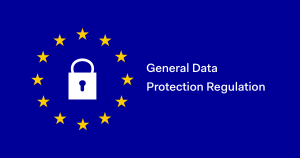Almost half (49%) of businesses in the US are using contextual targeting in their advertising mix with 32% relying on contextual targeting in the UK, according to a new research report “Contextual Advertising: The New Frontier.”
 The report, released on September 13 and commissioned by GumGum, an artificial intelligence company with deep expertise in computer vision, explores the current state of contextual advertising, to discover how it is seen by advertisers and agencies across the US and UK.
The report, released on September 13 and commissioned by GumGum, an artificial intelligence company with deep expertise in computer vision, explores the current state of contextual advertising, to discover how it is seen by advertisers and agencies across the US and UK.
Contextual targeting, which can be defined by placing relevant ads alongside content that users have an interest in, was revealed as the most widely used form in the US, followed by demographic (46%), geo-location (44%) and behavioural (25%). However, the results also showed that for most firms targeting is cumulative. In both the US and the UK, roughly two thirds of respondents (61%) said they wouldn’t consider using contextual targeting on its own in the future. Twenty-eight percent of respondents use contextual targeting all the time.
Adding to the Targeting Mix
 Contextual advertising’s ability to increase the relevance of advertising was seen as the main benefit by respondents in both the US and UK. Similarly, its ability to improve the user experience followed shortly behind. Respondents in the US were also notably more impressed with the way contextual targeting improves campaign planning and brand perception, than their UK counterparts.
Contextual advertising’s ability to increase the relevance of advertising was seen as the main benefit by respondents in both the US and UK. Similarly, its ability to improve the user experience followed shortly behind. Respondents in the US were also notably more impressed with the way contextual targeting improves campaign planning and brand perception, than their UK counterparts.
The research also revealed promising investment plans for contextual advertising. Whilst 61% of respondents kept spending on contextual constant last year, 24% increased it. A further 31% were planning to spend more next year. Approximately two-thirds of companies in both the US and UK (70% and 64% respectively) agreed that change was being driven by technological factors such as the ways that advertising can be targeted to consumers.
Despite the growing numbers, the research found that a quarter (25%) of respondents from the US and 37% of the UK were not using any targeting in their online advertising at all.
Emerging New Technologies
 One of the reasons contextual marketing is making a comeback, is the rise of semantic technology that allows machines a far deeper understanding of the contents of a page, both words and images, which enable advertisers to create much more sophisticated links between the content and the advertising.
One of the reasons contextual marketing is making a comeback, is the rise of semantic technology that allows machines a far deeper understanding of the contents of a page, both words and images, which enable advertisers to create much more sophisticated links between the content and the advertising.
This provides a far greater ability to target customers. Moreover, the speed at which today’s targeting systems operate, reduces the latency issues that used to damage the customer experience.
Machine learning and artificial intelligence are at the forefront of what contextual will be able to deliver in the future – the research showed that 66% of those in the US are already using contextual targeting based on images, for example, which has only recently been automated.
Brand Safety Concerns
 The renaissance of contextual marketing can also be attributed to brand safety concerns. The research highlighted that marketers are still approaching brand safety with extreme caution.
The renaissance of contextual marketing can also be attributed to brand safety concerns. The research highlighted that marketers are still approaching brand safety with extreme caution.
When asked whether the advertisers who pulled their advertising from YouTube in the wake of The Times investigation in 2017 had made the right decision, 79% of UK respondents said yes. In the US, that figure was 65%.
New contextual tools offer the ability to examine the content of a page in far more detail, including imagery, opening up more opportunities to reduce risk and deliver ads in brand safe, contextually relevant environments.
The Impact of Data Protection
 Less access to third party data, as a result of the EU General Data Protection Regulation (GDPR), is also driving the renaissance of contextual marketing and its value in the UK. This discrepancy between UK and US attitudes to GDPR is only a matter of time according to the report.
Less access to third party data, as a result of the EU General Data Protection Regulation (GDPR), is also driving the renaissance of contextual marketing and its value in the UK. This discrepancy between UK and US attitudes to GDPR is only a matter of time according to the report.
Whist it might not be top of mind for US companies at the moment, because commerce and data move freely across international borders, many firms in the US and across the globe will need to conform to its guidelines. Its implications will be far reaching and contextual will play a huge role in enabling brands to be smarter in their targeting.
 Ben Plomion, CMO, GumGum, commented: “We have seen a number of factors come together in recent months to increase the value contextual targeting brings to online advertising – from brand safety concerns and data protection regulations. But our research also revealed deeper trends such as advertisers desire to associate themselves with better quality content. Irrelevant advertising and disconnected ads can now be a thing of the past. With the significant technology advances available, and specifically the ability to analyse images and not just keywords, has really thrown contextual back to the forefront of advertising – brands need to take advantage.”
Ben Plomion, CMO, GumGum, commented: “We have seen a number of factors come together in recent months to increase the value contextual targeting brings to online advertising – from brand safety concerns and data protection regulations. But our research also revealed deeper trends such as advertisers desire to associate themselves with better quality content. Irrelevant advertising and disconnected ads can now be a thing of the past. With the significant technology advances available, and specifically the ability to analyse images and not just keywords, has really thrown contextual back to the forefront of advertising – brands need to take advantage.”
The full report “Contextual Advertising: The New Frontier” is available to download here.
Source: GumGum

You must be logged in to post a comment Login